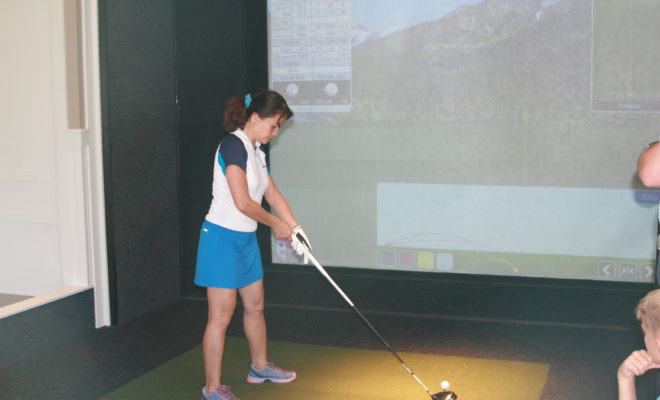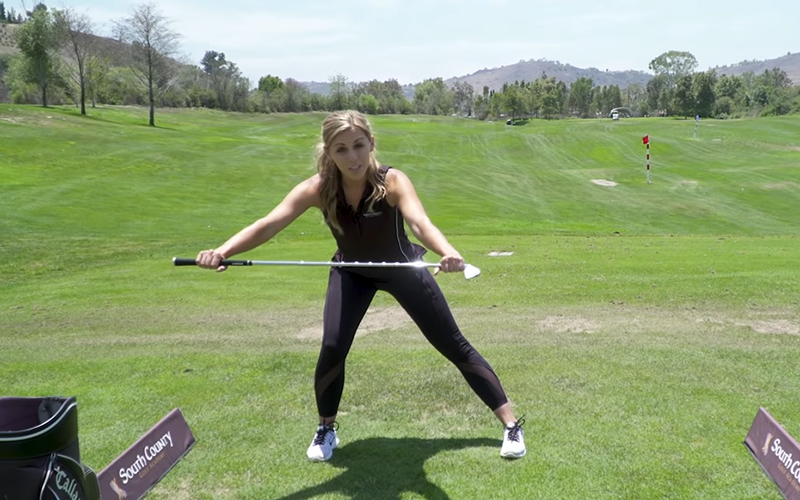Rethink The Traditional Golf Swing
By: Madison Lomas - Nov 15, 2018

For the last 30 years, Kiran Kanwar has been replacing instruction books and videos with equations and variables, using her passion for math and science to support the female golf community. Kanwar has been more than just a golf instructor at the Don Knabe Golf Center, a state-of-the-art facility for the under-served community of Norwalk with a focus on the less-experienced golfer. Her journey started when she became the first female golf teaching professional in India, and now dedicates her life using science to make the golf swing easier for the high-handicap player. She has spent 30 years teaching and researching, developing new swing tactics that are better for the body and easier to increase distance and trajectory (something we all strive for!) She has her B.S. in Physics and Math from Bombay University in Mumbai, India, along with a M.S. from Logan University in Missouri. But for Kanwar, it’s not enough – she is now working on her Ph.D at the Texas Women’s University.
FORE Her sat down with Kanwar to discuss the swing we love (or hate) today, and what she sees for it in the future.
FORE Her: What inspired you to think outside the box and research a new golf swing?
Kiran Kanwar: After years of playing, I grew tired of struggling so I took to science, my second passion, to try and find a solution. I knew I wasn’t the only one that “sucked” at the game, and it was time to really take a hard look at the traditional golf swing.
FH: What is your golf background?
KK: I’m a PGA and LPGA Class A instructor, but because I am a woman, people were always challenging me on any unique swing positions and movements I suggested. So, for the last eight years, I’ve worked hard as a graduate student working on my M.S. in Nutrition and Sports Science with Rehabilitation to show I know what I’m talking about. I strive to take it even further and earn my Ph.D in Biomechanics and Anatomy.
FH: When did you start teaching and what inspired you to teach?
KK: I once gave a lesson to an aunt and she said I was good and should do it professionally. Little did I know then that it was only the beginning and I would go on to learn so much more! Now I have the education to teach the golf swing and help golfers avoid injury through fitness, nutrition and sports psychology. I want to share my experiences with women who have struggled with the game for as long as I did.
FH: Why do you think the golf swing seems so foreign to the human body?
KK: A more natural movement would be running or walking – in a forward motion. When rotation is combined with a lot of other movements, especially of the arms, with the torso moving like a merry-go-round and arms requiring more ferris-wheel movement, then it may be a “bit much” to coordinate all together, especially when the golfer is anxious or stressed. Imagine patting your head and rubbing your stomach at the same time! The brain works extra hard to achieve these movements simultaneously.
FH: What are some challenges in this research?
KK: Biomechanics research is very tedious and involves the use of all sorts of complex equipment, which is still not free from error. When it comes to teaching, everyone wants to hit the ball farther or straighter or higher or a combination of those. But when it comes down to it, all golfers say, “Please, don’t change my swing!”
FH: What made you realize it was the swing technique and not you?
KK: Because lots of other golfers – both men and women – struggle too! Nobody is as good as they wish to be, not even the pros. It can’t all be a coincidence. The game is hard, but based on my research, it doesn’t need to be.
You can find Kanwar offering lessons and studying swings at the Don Knabe Golf Center. For more information on her research, visit Kanwar’s website.

